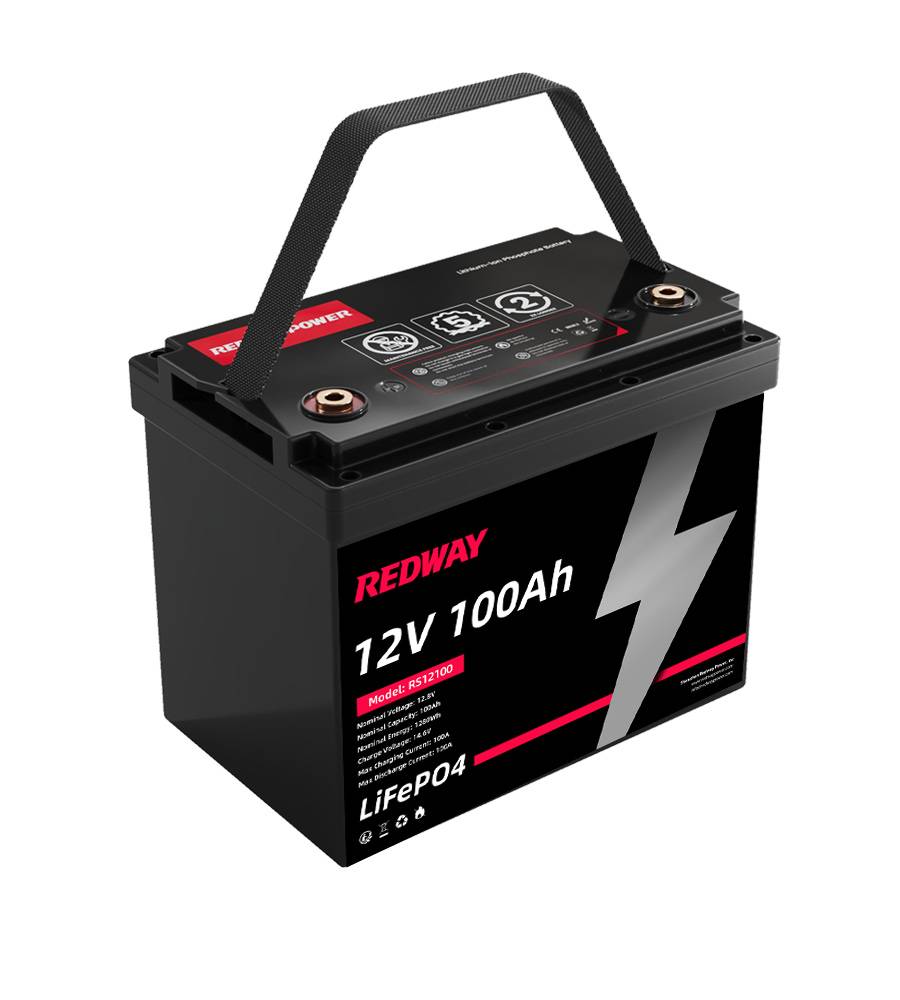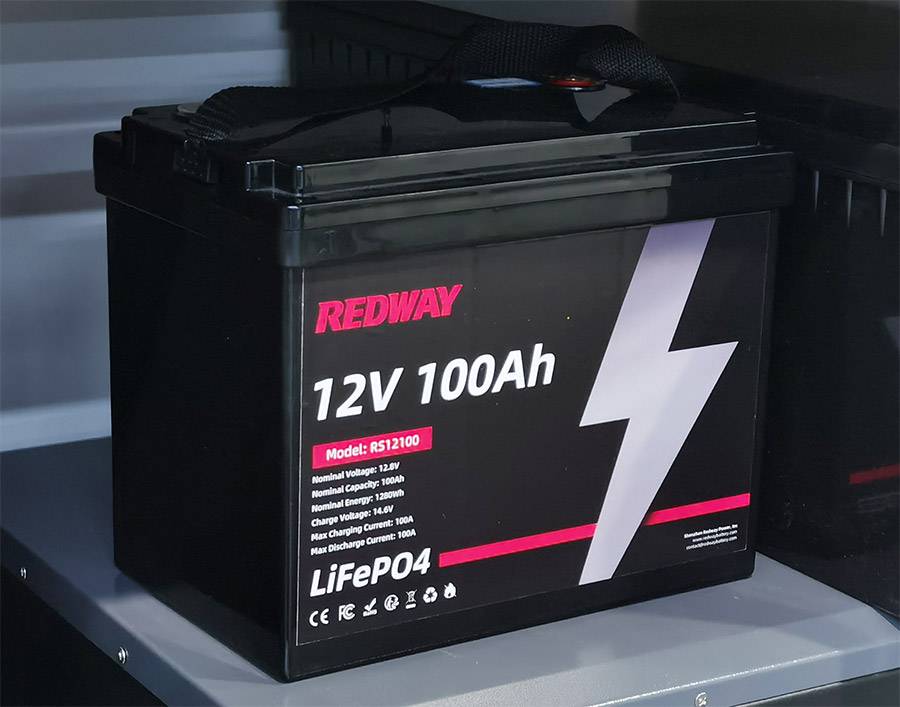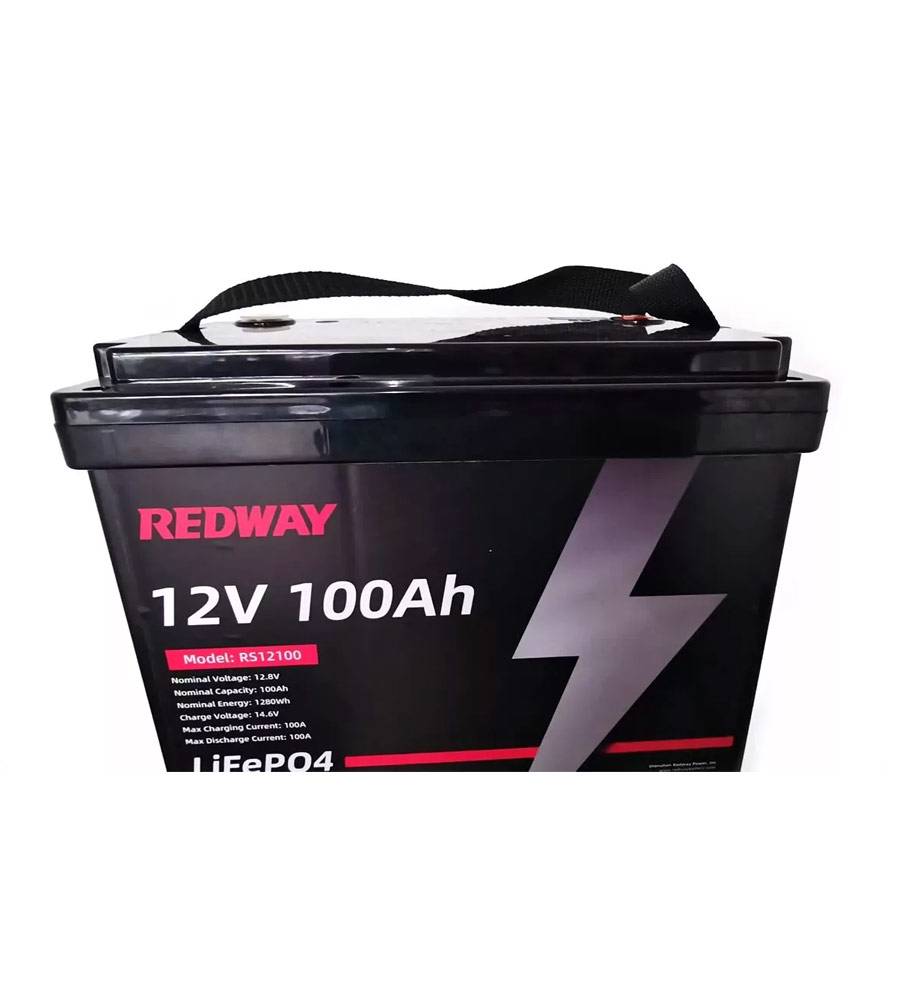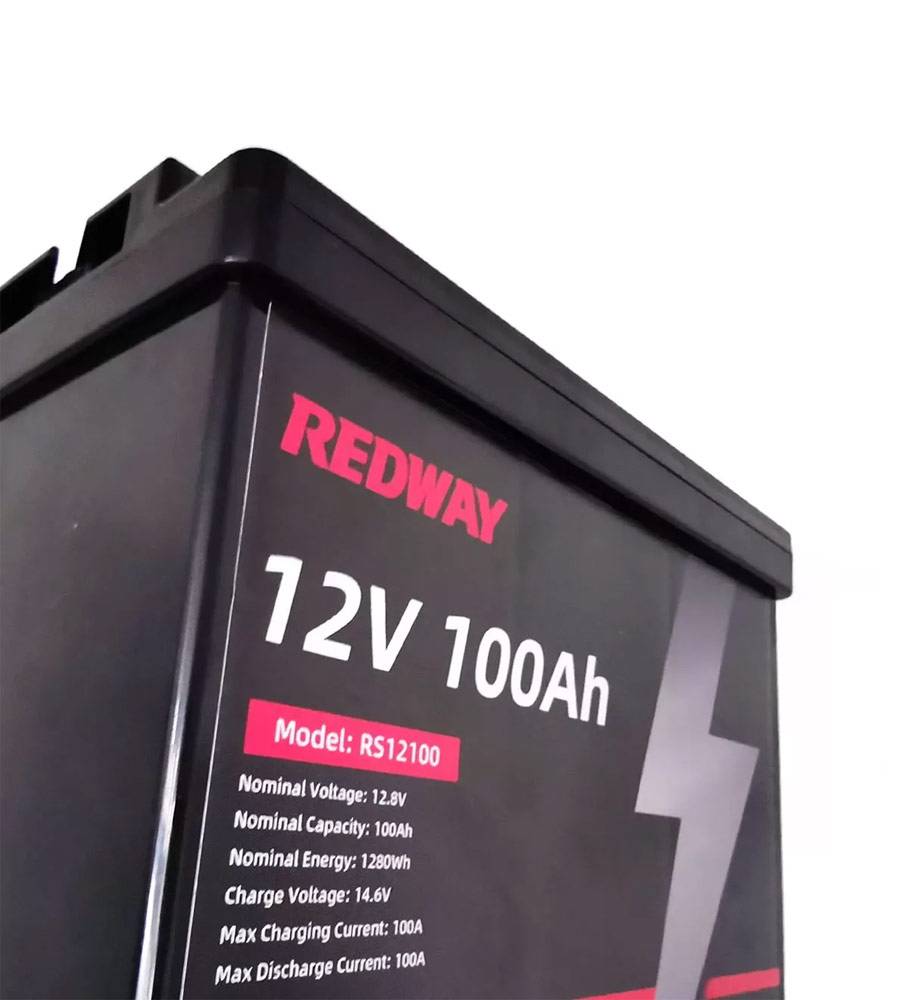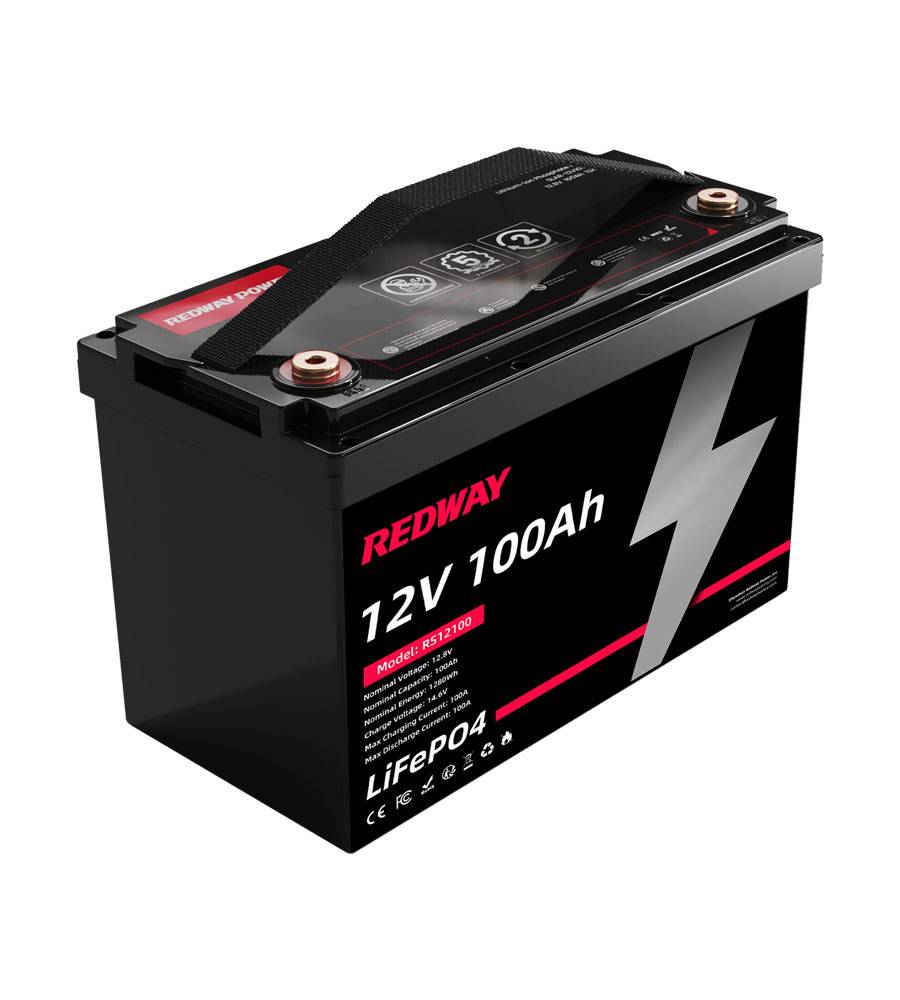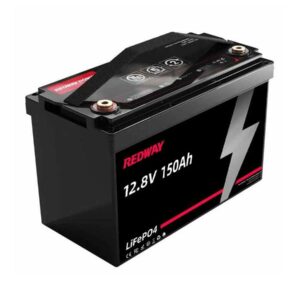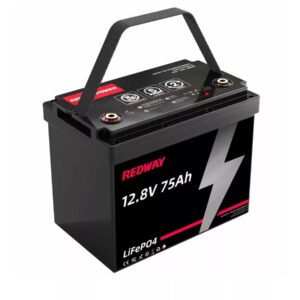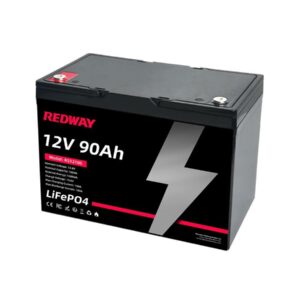Description
Our lithium battery manufacturer offers the 12V 100Ah LiFePO4 Battery, an ideal energy – storage solution for OEM, ODM, and wholesale buyers. It’s durable, efficient, and suitable for various applications.
Key Features
- Advanced Self – Heating Technology: Function well in cold climates for consistent performance.
- Impressive Capacity: A 100Ah capacity with 1280Wh of energy for high – demand uses.
- Extended Cycle Life: Lasts over 6000 cycles at 80% DoD, ensuring long – term value.
- Smart Connectivity: Bluetooth for real – time monitoring via mobile app.
- Robust Safety Mechanisms: An intelligent BMS to prevent overcharging and overheating.
Product Description
The 12V 100Ah LiFePO4 Battery operates at 12.8V nominal voltage. Its compact size (330 x 172 x 214 mm) and light weight (about 9.8 kg) allow for easy installation. It supports up to 100A continuous charge and discharge current. With a low self – discharge rate of ¡Ü1.5% per month, capacity loss during storage is minimal. The intelligent BMS protects against overcharging, over – discharging, and short circuits. For OEM customers, we offer customization like silk – screen labeling and personalized manuals. Our lithium batteries come with a five – year warranty and meet UL, CE, and RoHS certifications.
The 12V 100Ah LiFePO4 battery from Redway ESS delivers reliable, long-lasting power with advanced lithium iron phosphate chemistry and an intelligent Battery Management System (BMS). Designed for diverse applications such as solar energy storage, marine, RV, and backup power, it offers over 6000 cycles at 80% depth of discharge, robust safety features, and excellent performance across varied environments.
What are the key technical specifications of the 12V 100Ah LiFePO4 battery?
This battery features a nominal voltage of 12.8V and a capacity of 100Ah, providing approximately 1280Wh of energy. It supports continuous discharge currents up to 50A, with peak discharge currents up to 300A. The battery measures roughly 260 x 168 x 210 mm, weighs about 10 kg, and has an IP65-rated casing for dust and water resistance. It operates efficiently between -20°C and 65°C.
How does the Battery Management System (BMS) ensure safety and reliability?
Redway ESS’s BMS continuously monitors voltage, current, temperature, and state of charge to prevent overcharge, over-discharge, short circuits, and thermal runaway. It balances individual cells to maintain uniform performance and extends battery life by disconnecting power under unsafe conditions, ensuring stable and secure operation.
What safety features protect the battery during operation?
Safety features include overvoltage and undervoltage protection, short-circuit prevention, temperature monitoring with automatic cutoff, cell balancing, and a robust ABS plastic casing. The battery complies with international safety standards such as UL1642, IEC 62619, CE, and UN38.3.
What is the expected cycle life and how can it be maximized?
The battery offers more than 6000 cycles at 80% depth of discharge, significantly extending lifespan compared to lead-acid alternatives. Maximizing cycle life involves avoiding deep discharges, operating within recommended temperature ranges, using compatible chargers, and leveraging the BMS’s protective functions.
What are the common applications of the 12V 100Ah LiFePO4 battery?
This battery is ideal for solar energy storage, marine and RV power systems, backup power, electric scooters, and off-grid applications. Its high energy density and safety features make it suitable for residential, commercial, and industrial uses requiring reliable, portable power.
How does the battery perform in various environmental conditions?
Designed to operate between -20°C and 65°C, the battery withstands harsh environments with an IP65-rated casing protecting against dust and water ingress. Optional self-heating features support cold climates, ensuring consistent performance.
What protections does the battery have against overcharge, over-discharge, and temperature extremes?
The BMS automatically disconnects the battery when voltage or temperature thresholds are exceeded, preventing damage and hazards. Overcurrent and short-circuit protections further ensure operational safety, while cell balancing prevents capacity loss and uneven wear.
How does cell balancing contribute to the battery’s health?
Cell balancing ensures all individual cells maintain equal voltage and capacity levels, preventing weak cells from limiting overall battery performance. This process enhances longevity, optimizes energy output, and reduces the risk of cell damage.
How does the cylindrical cell design impact battery performance and safety?
Cylindrical cells provide superior mechanical stability and heat dissipation compared to prismatic cells, reducing swelling and thermal risks. This design enhances battery safety, reliability, and longevity, making it a preferred choice for high-performance applications.
What sustainability initiatives does Redway ESS follow in battery production?
Redway ESS employs eco-friendly manufacturing processes, waste reduction, and recycling programs. Their batteries’ long cycle life and efficiency reduce environmental impact by minimizing resource use and waste, aligning with global sustainability goals.
How can users optimize the performance and lifespan of their LiFePO4 batteries?
Users should avoid deep discharges, maintain charging within recommended parameters, operate within temperature limits, and regularly monitor battery health using smart features. Using compatible chargers and following manufacturer guidelines further enhances battery longevity.
Chart: Cycle Life and Weight Comparison of 12V 100Ah Batteries
| Battery Type | Cycle Life (Cycles) | Weight (kg) | Energy Density (Wh/kg) |
|---|---|---|---|
| Lead Acid (12V 100Ah) | ~500 | ~30 | ~30 |
| LiFePO4 Cylindrical (Redway ESS) | >6000 | ~10 | 120+ |
Chart: Key Safety and Smart Features of Redway ESS 12V 100Ah LiFePO4 Battery
| Feature | Description |
|---|---|
| Battery Management System (BMS) | Protects against overcharge, discharge, and thermal events |
| IP65 Rating | Dust and water resistance |
| Communication Protocols | Bluetooth, WiFi, CAN bus, RS485 for remote monitoring |
| Thermal Protection | Prevents overheating |
| Cell Balancing | Ensures uniform cell voltage and performance |

